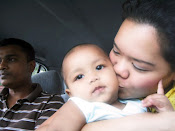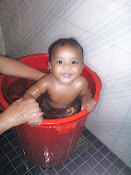Child care



It is traditional in western society for children to be looked after by one or both of their parents. In many families (and almost exclusively so in some communities), the childcare role is taken on by the extended family. One of the challenges for parents who choose to use other sources of childcare is finding and affording qualified providers.
The need or preference for two-job households means that childcare is often delegated to childminders or crèches on a full-time or part-time basis. The three main types of child care options for American working families include in-home care, family care, and child care centers.
In-home care typically is provided by nannies, au-pairs, or friends and family. The child is watched inside their home, reducing exposure to outside children and illnesses. Depending on the number of children in the home, the children utilizing in-home care enjoy the greatest amount of interaction with their caregiver, forming a close bond. There are no required licensing or background checks for in-home care, making parental vigilance essential in choosing an appropriate caregiver. Nanny and Au-pair services provide certified caregivers and the cost of in-home care is the highest of childcare options per child, though a household with many children may find this the most convenient and affordable option.
Family care is provided from a care giver's personal home, making the atmosphere most similar to a child's home. State licensing requirements vary, so the parent should conduct careful interviews and home inspections, as well as complete a background check on the caregiver's license. Any complaints against the caregiver will be documented and available for public record. Family care is generally the most affordable childcare option, and offers flexibility in hours available for care. In addition, family care generally has a small ratio of children in care, allowing for more interaction between child and provider than would be had at a commercial care center.
Commercial care centers are open for set hours, and provide a standardized and regulated system of care for children. Parents may choose from a commercial care center close to their work, and some companies offer care at their facilities. Active children may thrive in the educational activities provided by a quality commercial care center. Classes are usually largest in this type of care, ratios of children to adult caregivers will vary according to state licensing requirements.
Regardless of type of care chosen, a quality care provider should provide children with light, bright and clean areas to play as well as separate sleeping and eating areas.
Most western countries also have compulsory education during which the great majority of children are at school starting from five or six years of age. The school will act in loco parentis meaning "in lieu of parent supervision".
Where parents are missing, dead, unable or unfit to care for children, state agencies such as social services may take on the childcare role.
The need or preference for two-job households means that childcare is often delegated to childminders or crèches on a full-time or part-time basis. The three main types of child care options for American working families include in-home care, family care, and child care centers.
In-home care typically is provided by nannies, au-pairs, or friends and family. The child is watched inside their home, reducing exposure to outside children and illnesses. Depending on the number of children in the home, the children utilizing in-home care enjoy the greatest amount of interaction with their caregiver, forming a close bond. There are no required licensing or background checks for in-home care, making parental vigilance essential in choosing an appropriate caregiver. Nanny and Au-pair services provide certified caregivers and the cost of in-home care is the highest of childcare options per child, though a household with many children may find this the most convenient and affordable option.
Family care is provided from a care giver's personal home, making the atmosphere most similar to a child's home. State licensing requirements vary, so the parent should conduct careful interviews and home inspections, as well as complete a background check on the caregiver's license. Any complaints against the caregiver will be documented and available for public record. Family care is generally the most affordable childcare option, and offers flexibility in hours available for care. In addition, family care generally has a small ratio of children in care, allowing for more interaction between child and provider than would be had at a commercial care center.
Commercial care centers are open for set hours, and provide a standardized and regulated system of care for children. Parents may choose from a commercial care center close to their work, and some companies offer care at their facilities. Active children may thrive in the educational activities provided by a quality commercial care center. Classes are usually largest in this type of care, ratios of children to adult caregivers will vary according to state licensing requirements.
Regardless of type of care chosen, a quality care provider should provide children with light, bright and clean areas to play as well as separate sleeping and eating areas.
Most western countries also have compulsory education during which the great majority of children are at school starting from five or six years of age. The school will act in loco parentis meaning "in lieu of parent supervision".
Where parents are missing, dead, unable or unfit to care for children, state agencies such as social services may take on the childcare role.







